Inward Blog
Viewing entries tagged with 'brand'

Don’t Get Caught Sleeping Behind The Wheel
September 1, 2016
I was planning to write a blog post this morning on an entirely different topic. I changed my mind when I saw the scene outside my office window. Apparently one of the technicians from a local utility company thought it was okay to grab at catnap in the middle of the day. I immediately thought that the company might have an employee engagement problem if their people feel it’s okay to take a nap in the middle of the day. Now I realize people have good days and bad days. Perhaps he had a late night taking care of the sick child, or maybe he had insomnia couldn’t get a good night sleep. Or maybe he was up partying to the wee hours of the night and woke up with a hangover.
Posted by Allan Steinmetz at 11:00am
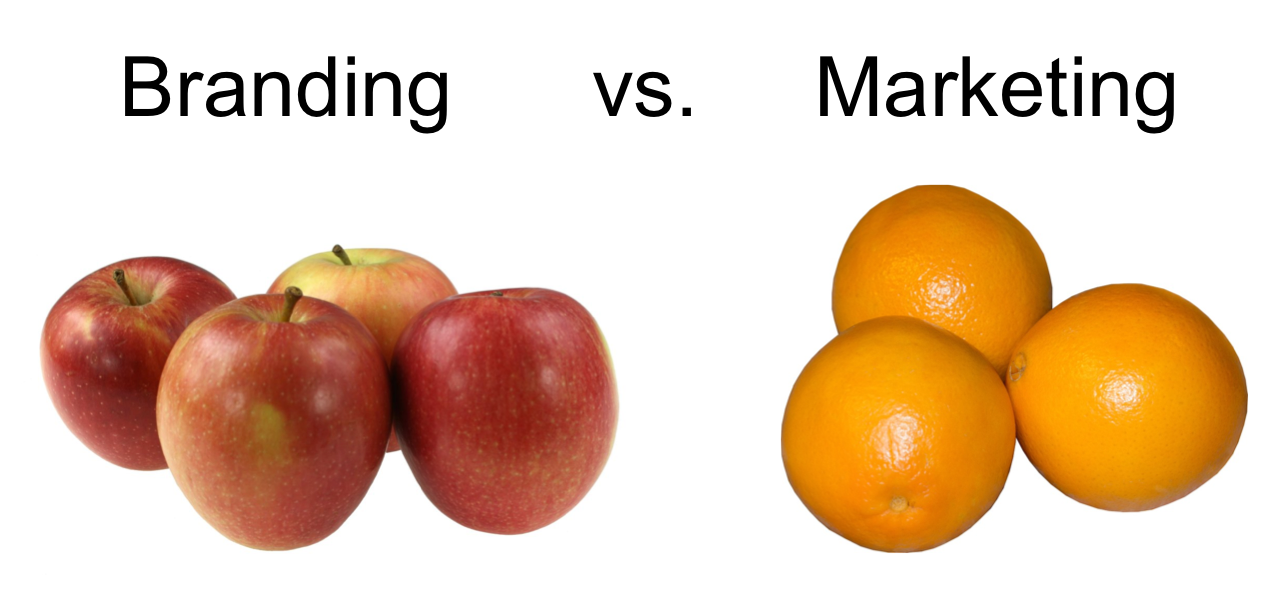
There Is A Difference Between Branding And Marketing
July 26, 2016
I had a very interesting meeting last week with the COO of a major Fortune 100 company with revenues in excess of $5 billion and over 80,000 employees worldwide. The purpose of the meeting was to discuss how to "brand" the company and accelerate a new corporate strategy of growing revenue, entering new markets, increasing competitiveness, and becoming more distinctive.
It didn't take long for me to realize that there was quite a bit of confusion between "branding" and "marketing." The executive appeared visibly frustrated by his previous meetings with two large and traditional brand-identity firms who talked about identity standards, design continuity, and logos. He was clear about one thing: he liked the current logo and identity and wasn't about to change them. What he was looking for, however, was a process to unite his people behind a common vision and values. He also wanted "branding" to help accelerate business development.
Using our Dialogue Marketing approach, I explained the difference between branding and marketing. I was, however, left wondering why many other senior executives cannot make this distinction. I'd like to take a shot at clarifying the difference, and then explain how Dialogue Marketing unites these two distinct activities into a single, integrated process.
Branding vs. Marketing: is there a difference?
I went straight to the internet and found several different definitions for branding and marketing. The best definition for a brand, I thought, was from Wikipedia:
A brand is the symbolic embodiment of all the information connected with a product or service. A brand typically includes a name, logo, and other visual elements such as images or symbols. It also encompasses the set of expectations associated with a product or service which typically arise in the minds of people. Such people include employees of the brand owner, people involved with distribution, sale or supply of the product or service, and ultimate consumers.
Defining marketing was not as easy. I found definitions that covered the gambit from advertising to a planning process to sales development and beyond. No wonder an executive who does not have day-to-day responsibilities for marketing is confused! Is marketing at a trade show branding? Is launching a new product or web site branding? The answer could easily be yes for most people, but there is a distinction that we must keep in mind.
Since I wasn't able find a good definition for marketing, I am providing the one we use here at Inward Strategic Consulting:
Marketing is a process of planning and identifying the needs and wants of a target market and meeting them through a series of integrated tactical activities. Pricing, product features, distribution/selling, advertising/PR/promotions, and retailing are all part of marketing. Its goals are to outperform the competition, create demand, and maintain customer loyalty.
Now the distinction between the two definitions is clear. Branding deals with the look, image, tone, and manner of the company and its products and services. Marketing is about communicating the company's brand through a planned series of integrated promotional and sales activities. It really is that simple. So why the confusion?
Branding companies, PR firms, and management consultants muddy the waters
Over the years, as definitions and activities have become blurred, people have come to see branding and marketing as the same thing.
One factor that has contributed to the confusion is the way that business has changed. A big part of the problem is our marketing and communications profession, with its zeal to grow revenue, develop client relationships, and expand business. The branding firms have extended their activities beyond creative identity, reputation management, and design to manage trade shows, write collateral, and produce sales events and videos.
Advertising and public relations firms, in addition to designing ads, logos, and tag lines, are entering new fields: interactive employee engagement, guerilla marketing, and analyst relations. Some of them even compete with their sister brand agencies. It would be in the best interests of their clients to integrate their talents and capabilities, but they are all too busy morphing into amalgamated communications companies.
Then there are the management consulting firms, all about process improvement, measurement, and accountability. They claim to understand and care about the difference between good and bad branding-and certainly have strong opinions if you disagree with them. But they do view branding as a matter-of-fact rather than a creative process. They measure everything, applying marketing econometrics and analytics to project customer differentials and the inclination towards improved market performance and acceptance. (Did you have to read that sentence twice to understand what it is they do?) They have process maps, formulas, and models. Boy, do they have models!
To management consultants, branding is a marketing process and marketing is a sales process. They, too, have contributed to the blurring of brands and marketing.
Dialogue Marketing makes it clear again
At Inward we believe that it is time to return to clear definitions of branding and marketing. While we acknowledge and reinforce that they are distinctive and different, we do need to recognize how and when they work together. What we need is an integrated approach. Here it is:
Branding creates a reputation, a look and image, a tone and manner, even an attitude that makes the company stand out to customers. Marketing launches that identity through sales, with an integrated plan of activities designed to reach the company's objectives.
These two distinct activities are unified in a single process we call Dialogue Marketing:
Dialogue Marketing establishes brand architecture and maintains communication with the customer throughout the lifecycle of the relationship. The process starts by building awareness. It continues with one-to-one dialogue and incentive marketing or closing the sale. Relationship marketing maintains customer loyalty with special communications and deals.
There are two parts to the Dialogue Marketing process: establishing the brand followed by marketing and sales development.
Part 1: Establishing the brand
Posted by Allan Steinmetz at 1:00pm
Branding, Marketing, Employee Engagement, Dialogue Marketing

Stick With Your Brand Positioning And You Will Have A Better Chance At Growing Employee Engagement
July 21, 2016
For the first time in a decade, the average tenure for CMO's in corporate America has dropped from 48 months to 44 months between 2014 and 2015, according to Spencer Stuart, a senior-level executive search firm that has been analyzing this information for over 10 years. And in other parts of the world, that time is even shorter, with the average tenure for a CMO in the U.K. at a mere 18 months. The research also reveals that 73% of the new CMO’s in 2015 are moving into this position for the first time in their careers. There are many dynamics that are causing this trend but I want to focus on the implications this has on effectively creating a culture of high engagement.
Posted by Rick DeMarco at 1:00pm

Enterprise Engagement Alliance and Engagement Strategies Media Honors Inward With 'First' Award
May 4, 2016
We are humbled and proud to announce that the Enterprise Engagement Alliance has bestowed the 'First' award to Inward Strategic Consulting as one of three top Solution Provider honorees last week at their EEA expo and Gala dinner in Orlando. The 'First' Award winners were selected by EEA Engagement Strategies Media (ESM) editorial contributors based on their actual first-hand knowledge of these companies, confirming without question that each of the honorees was indeed a pioneer at seeking to profit from the concept of linking engagement across the entire organization in a strategic way to achieve key goals.
Posted by Allan Steinmetz at 11:00am
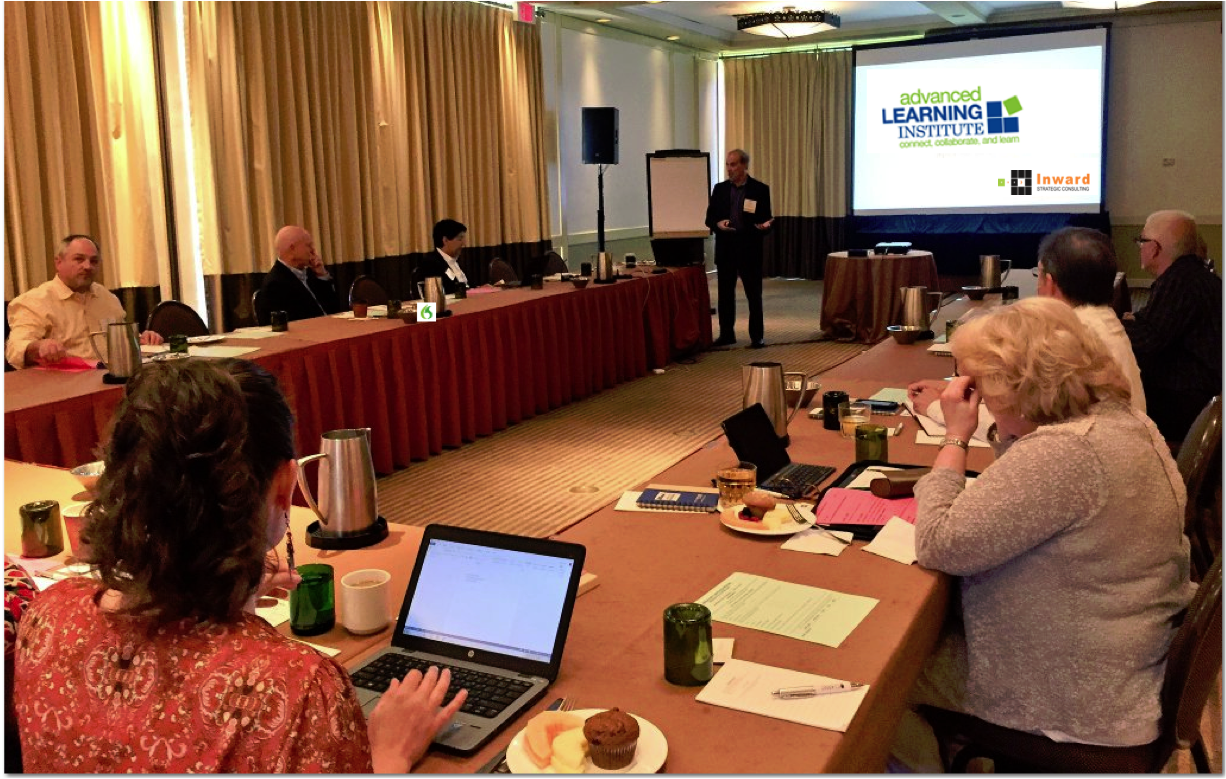
My Ten Key Takeaways from the ALI Conference on Brand Engagement
April 29, 2016
I just returned from an Advanced Learning Institute (ALI) conference in Scottsdale, Arizona, on Strategic Internal Branding. As usual, ALI did an outstanding job of lining up some great speakers and presentations and participants were able to attend four hands-on workshops on the first day. Inward kicked the meeting off with a workshop on implementing an effective internal branding process that drives employee engagement and exceptional performance. So after this two hour presentation, I was able to spend quality time listening to other workshops and presentations and learning from others.
Posted by Rick DeMarco at 8:00am

Should Companies Have A Variety Of Internal Initiative Logo Lockups? Does It Conflict With Brand Standards?
April 14, 2016
I received a call the other day from one of our clients, a corporate director of branding. In this role he is responsible for the corporate brand identity standards for his company in addition to maintaining the company’s external image, tone of voice, advertising, corporate communications, personality marketing, and research. He explained that they are a “branded house” and that they have very strict identity standards and don’t allow deviations in any way shape or form from their standards. No independent logo lockups are allowed. Period.
Posted by Allan Steinmetz at 2:00pm
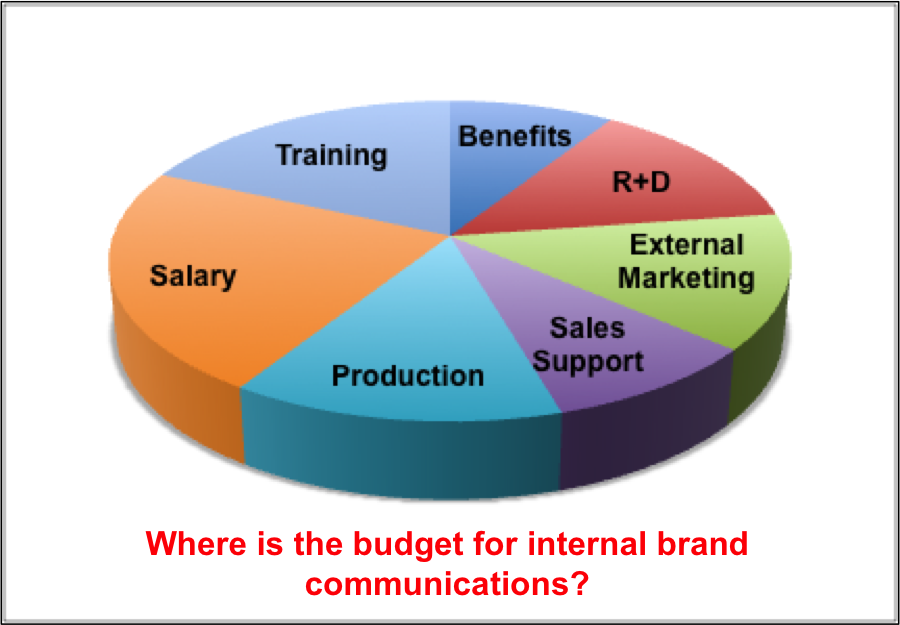
5 Ways To Find The Resources For An Internal Brand Communications Program
February 9, 2016
Last week I attended the Marcus Evans Internal Communications and Situational Messaging conference in Orlando, Florida. We heard from outstanding speakers about how their companies were educating motivating and inspiring their people. We heard compelling presentations from IBM, Southwest Airlines, UPS, Coca-Cola and Kohl’s just to mention a few.
Posted by Allan Steinmetz at 11:00am
Internal Brand Communications, Budgeting, Resources, Strategy
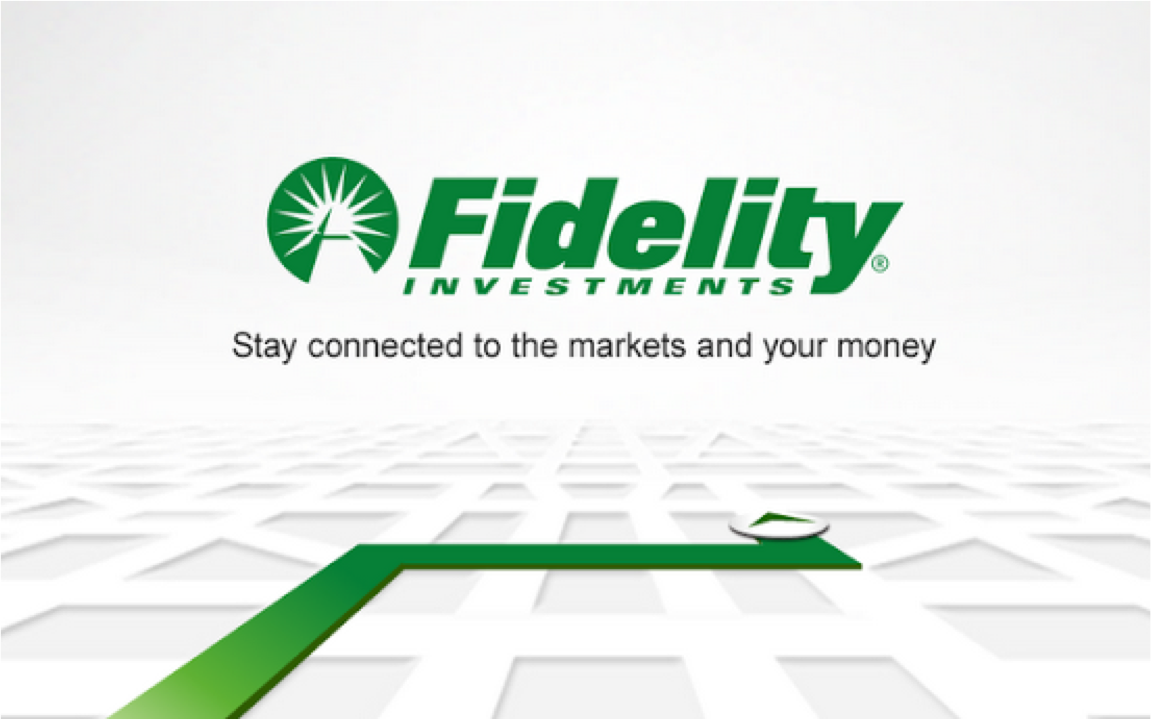
“Back to the Future” with Jim Speros, EVP Communications of Fidelity Investments - Reminiscing about AT&T
January 26, 2016
The other day I had the pleasure of visiting with Jim Speros, who is the EVP of Corporate Communications for Fidelity Investments. Jim has had a remarkable career in a variety of marketing and advertising roles over the last 39 years. In addition to the last eight years he has served Fidelity Investments, he has also worked at Marsh-McLennan Companies, Ernst & Young and AT&T.
Posted by Allan Steinmetz at 11:00am
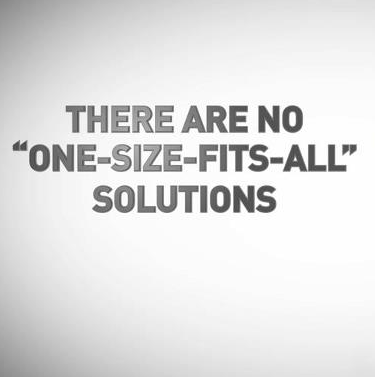
Does One Size Fit All In Employee Engagement?
September 24, 2015
The other day I was approached by a prospective new manufacturing client. They had a robust employee engagement and employee brand program, but for reasons unbeknownst to him, they were not being effective. They were doing all the right things in regard to regular frequent communications, having a message that was aligned with corporate vision and mission, and a decent recognition / reward program which supported appropriate behaviors and innovations. But the programs were not having the impact he and senior management desired. He had hoped for higher employee retention, greater brand ambassadorship and advocacy in higher productivity and efficiency of performance but none of that was happening.
Posted by Allan Steinmetz at 11:00am
Employee Engagement, Internal Communications, Branding, Marketing

70% Of The US Workforce Is Not Actively Engaged
September 15, 2015
Businesses are getting smarter every day. Big data and predictive analytics have allowed companies to operate more efficiently and effectively. Globalization has forced collaboration in real time from all ends of the Earth; fostering innovation as the array of knowledge inputs expands exponentially.
Posted by Matt Manning at 11:00am
